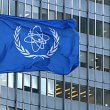By: Awi Federgruen & Ran Kivetz
Israel’s acknowledgement that a drone attack mistakenly killed seven aid workers in Gaza has led to renewed criticism of the Jewish State. The tragic incident came less than three weeks after a report issued by the Integrated Food Security Phase Classification (IPC) claimed that 1.1 million people – nearly half the population of Gaza – face “catastrophic food insecurity” conditions and that Northern Gaza will face famine by May if hostilities continue.
The European Union’s high representative for foreign affairs and security policy, Josep Borrell, blamed Israel, saying, “Starvation is used as a weapon of war. Israel is provoking famine.” And U.S. officials unveiled a United Nations ceasefire resolution that cited "famine" conditions after the IPC report came out.
But Hamas, which has been hoarding food and stealing from Gazans, is the root cause of Gazans’ suffering. As Congressman Jim Himes, a Connecticut Democrat and ranking member of the House Intelligence Committee, stated in a CNN interview: “Hamas has a long history of stealing aid, and needs to stop that in the interest of the people that they purport to represent.”
Israel has tried for years to balance its interests with those of innocent Palestinians. Its maritime blockade did not stop Gaza from being self-sufficient in fruits and vegetables, with enough left over to potentially export.. Despite the war, three-quarters of greenhouse acres were still available as of Feb. 15, according to a United Nations Food and Agriculture Organization (FAO) report, which has the latest available data. Israel’s Coordination of Government Activities in the Territories (COGAT) indicates that bakeries can still provide “over 2 million breads, rolls, and pita breads a day.”
Since the war began, the Israel Defense Forces (IDF) have engaged in what West Point Urban Warfare Studies Chairman John Spencer described as “a remarkable, historic new standard” for wartime treatment of civilians, resulting in a civilian-to-combatant mortality ratio that is “historically low for modern urban warfare.” For example, Israel regularly provides warnings of impending attacks, assists with evacuations, and even stops its attacks on a daily basis to allow humanitarian aid to arrive.
Despite the recent tragedy, the IDF tries to ensure that Gazans don’t starve throughout the war. COGAT data show that 290,000 tons of food and beverages have been delivered to Gaza since October — recently as many as 200 truckloads a day. Full distribution of these supplies would deliver about 1.82 pounds of food daily for each of the 2 million people in Gaza (145 kg per person, during 175 days of war). Based on FAO estimates of the average daily consumption in Asia and Africa (where Gaza is situated), this alone would be enough to supply 50% of Gazans’ daily consumption needs – on top of the food they continue to produce themselves.
Israel has also collaborated with the U.S. to provide further aid. The Biden administration recently announced plans to build an emergency pier that would provide 2 million meals per day. This idea was first suggested to President Biden by Israeli Prime Minister Benjamin Netanyahu last October, just weeks after the war started.
Unfortunately, this is not the first time that leaders have been misled about the data surrounding the Israel-Hamas war. For example, policymakers and news media have repeatedly cited casualty numbers taken from none other than Hamas itself. But Abraham Wyner, a professor of statistics and data science at the University of Pennsylvania’s Wharton School, has stated that “the numbers are not real.” For one thing, he writes, there is little variability in the daily reported casualty numbers, despite variability in the daily numbers of strikes, and the randomness in collateral damage arising from any given strike. Additionally, “the ebbs and flows of the bombings and attacks by Israel should cause the daily counts of men and women to move together. But that is not what the data show. Not only is there not a positive correlation, there is a strong negative correlation.”
Much of the apparent confusion results in criticisms of Israel, as we saw early in the conflict with an alleged hospital bombing that turned out to be a likely terrorist group’s rocket gone awry. Despite the uproar over the IPC report and the aid workers’ tragic deaths, Israel is not the Palestinians’ enemy. It is their partner for a peaceful future, while Hamas uses civilians as human shields and cannon fodder. Leaders can most help the Palestinians by allowing Israel to completely uproot Hamas, thus giving a fresh start to the Middle East.










